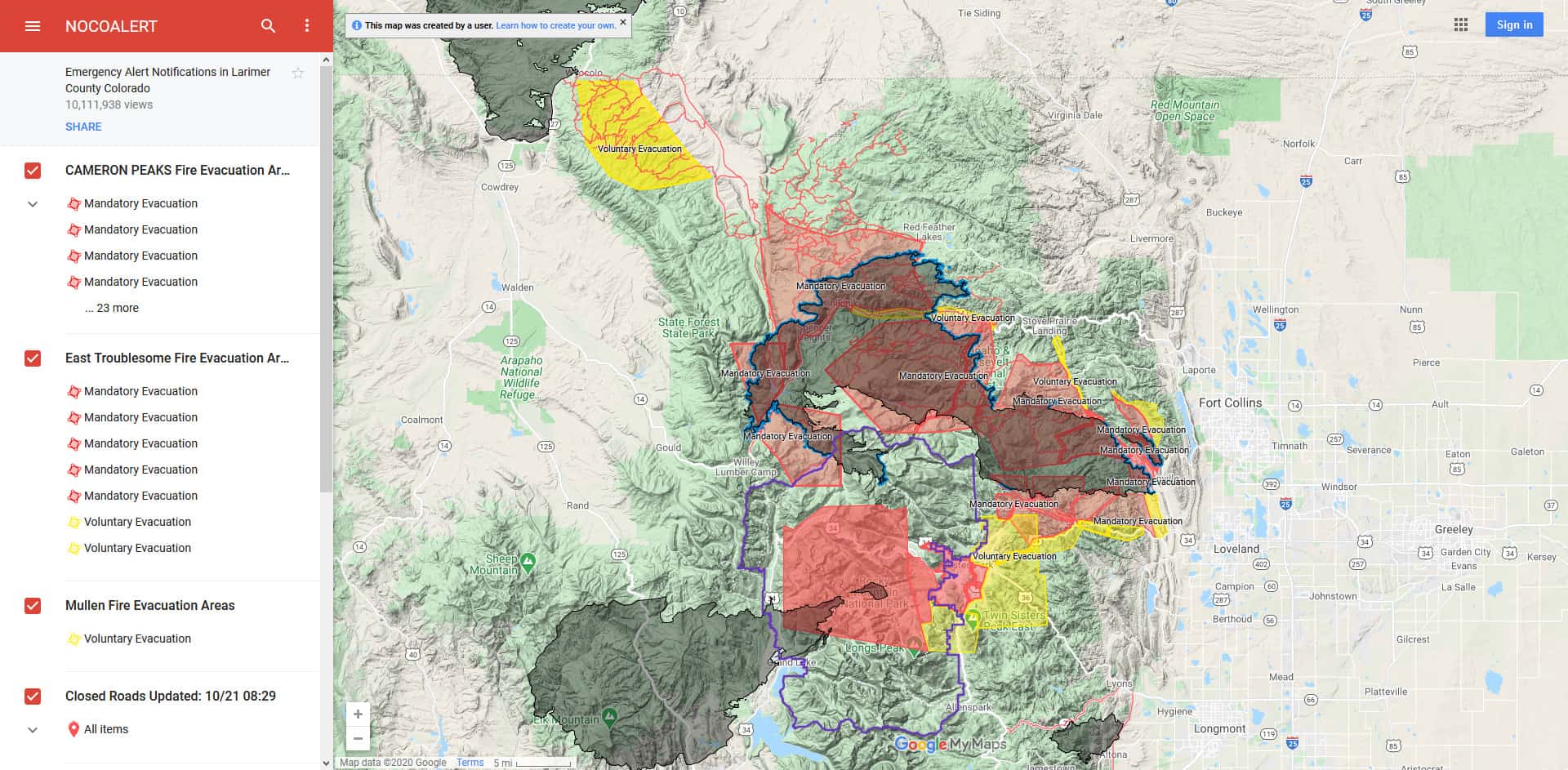Colorado has three very large fires at the present moment- the Cameron Peak (207K acres) and the East Troublesome (170K) (at the time I checked Inciweb for this pot) with some of the Mullen fire in Wyoming also in Colorado (total 177K). According to Inciweb, “Forest closures are in place for the Arapaho and Roosevelt National Forests and the Medicine Bow-Routt National Forests. Rocky Mountain National Park has also issued closure order. There is a area closure on the Bureau of Land Management – Kremmling Field Office lands.” Cold weather has moved in and hopefully this will help.
Anyway, for Coloradans, this may bring back memories of the summer of 2000. Patty Limerick has resurrected this 12 page write-up from that summer, in which she rounded up a bunch of experts from University of Colorado, Colorado State University and other places. It’s interesting to think about what has changed and what is the same- note that blow-ups are predicted, even without anthropogenic climate change, just from “standard” droughts. What’s interesting to me is how, or if, framing the 2020 fire season as being “about AGW” changes how the stories are told, who is an expert (the climatologists or other fire researchers?), and what the solutions are. Pragmatically, we’re not sure we can reverse changes in conditions at all or in the near term, so what is the best way to adapt to an unknown future?
I’ve excerpted a couple of paragraphs.. Tom Veblen based on fire history research:
In the years 1786 and 1859, there were fires in lots of Front Range forests; “more than 50% of the area was burning.” And this example of two very heavy fire seasons from the past should, Veblen said, leave us “very concerned.” The development of dense stands about the same age meant a synchronicity in outbreaks of budworm infestations, and that, in turn, left dead trees and a greater regional fire hazard. More information on the patterns of spruce budworm outbreaks would thus be very useful to understanding fire regimes.
I think we’ve made a great deal of headway on this:
Designing community assistance and participation offers its own challenges. While we have lots of ecological and technological information available, an understanding of social attitudes is in short supply.
We have done much such research, and communities have done much work. But there are still fires.
But that hardly addressed the more compelling problem: “What to do with existing houses?” “We need a born-again Smokey the Bear,” Phil Tompkins declared, “to tell people what they need to do. This is an urgent matter.” “Terry tells me,” Phil went on to say, with Terry nodding in agreement, “that it is the consensus of the fire establishment that the Front Range is a disaster waiting to happen.” The amount of the interface between human habitation and forest here is simply “amazing.”
” Terry Tompkins said that “blow-up fires are inevitable,” and “we have not yet prepared people properly for this.” Mark Haggerty raised the the crucial question, What are we to do with people moving into rural areas and “moving into harm’s way?”.
Both of these deal with the idea that “people moving into areas” is the problem. But I agree that there are existing houses and towns, and moving people out is unlikely to work.
Since 2000, though another idea has gained traction that isn’t mentioned here.. letting fires burn through communities and somehow hardening the infrastructure so that it survives the fires. Not sure, I think this still would require evacuations for people and animals. Certainly building codes, HIZ management and evacuation planning have all been been part of the efforts of community wildfire associations and insurance companies. But houses and communities still burn down and are likely to be rebuilt, if fires close to me are any indication.
So we’re back to the same old, same old, despite the Fire Plan:
* Need more PB
* Sometimes you need to do mechanical treatments first, or instead.
* No markets for small material (plus some groups don’t want small material sold either)
* Still need suppression
* Folks who build in tree country (and other wildlands) need to take “appropriate” responsibility; with, I’m sure, “what is appropriate?” being somewhat controversial.
Please add your quotes of interest and thoughts in the comments.
